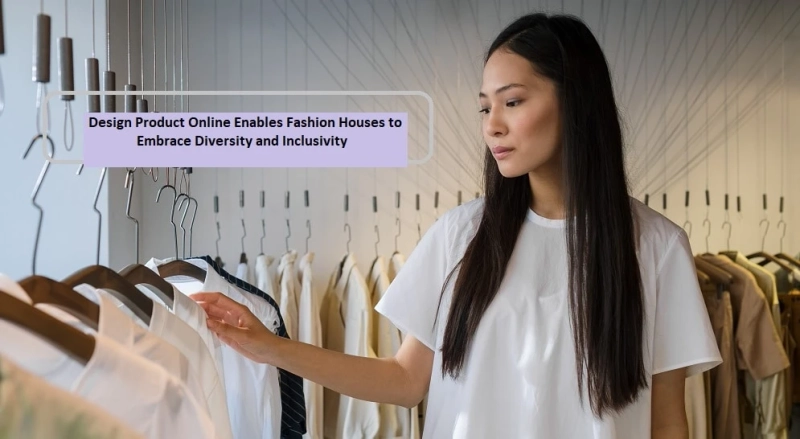In recent times, inclusiveness has become the watchword in the fashion and luxury world. With the rising awareness among buyers and increasing accessibility of the internet and, thereby, brands, it is imperative for fashion houses to act on social responsibility. In the past few years, we have seen up roaring among many sections of society for being neglected, not represented enough or wrongly, and also being looked down upon. However, the online product designer enables fashion and luxury brands and retailers to embrace inclusiveness and diversity in terms of the race completely, gender, size, and other factors. The customization solution, along with the digital features, enables your buyers to design their fashion products, including apparel, footwear, headgear, handbag, and many other products. It helps fashion houses to embrace each customer, respect their individuality and encourage them to speak their minds, and allow them to flaunt their fashion style.
Design Product Online Offers Platform to Fashion Companies to Celebrate their Customers
The human race is designed to be diverse, and the fashion industry principally must equally represent itself. However, this hasn\'t been the case. People with darker skin, too slim or thick in size, or having different gender preferences have not been represented appropriately. Inclusiveness has been about considering everyone in the same way and giving everyone real visibility, but diverse people were given minor attention in the sector. The concern for more inclusiveness does not date back to 2020 but goes much further. Jean-Paul Gaultier and John Galliano proclaimed way back in several of their iconic shows that "fashion comes from the street." In the last two years, black models have become more numerous on the catwalks and increasingly in demand as \'it girls\' for brands — a kind of new beginning. This evolution has marked the beginning of a journey towards the acceptance of human diversity in the broadest way possible. Another pioneering example of the trend is model Winnie Harlow who has vitiligo.
The example and cases mentioned in the above paragraph are just the tips of the iceberg. There are many other ways fashion houses can embrace diversity and inclusiveness, for example, being acceptable doesn\'t necessarily mean choosing a black or mixed-race woman as a muse. It is about understanding people and offering them equal pay. Recently, an organization saw the light of day in the United Kingdom: the Fashion Minority Alliance; it aims to represent and defend all minorities in the fashion industry. They believe that promoting and securing the advancement of black and minority creatives and ensuring the intersectionality of differences are accountable and transformed into positive, sustainable, and long-term change. Consider the case of Rihanna, who back in 2016 got things rolling single-handedly, with her Fenty brand and offering apparel and beauty products for all people with all types of color, body type, and skin type. It wouldn\'t be an exaggeration to say that the recent upheaval in society only accelerated the current movements. They have created a momentum where all people feel they belong to a group, a community, and make fashion and luxury brands get their audiences and enable them to feel represented. In beauty, MAC, Sephora and even Dior have followed in Fenty Beauty\'s footsteps, creating wider ranges of makeup adapted to different skin types. The 3D design online works on similar lines and offers customization and digital solutions to fashion and luxury brands and retailers that helps them to embrace every customer and represent them. Your buyers can select, customize, and preview their designed product using 3d technology and get a 360-degree view.
Inclusive fashion has gained huge traction from leading brands as well, and they are changing a little bit more than their usual attitude. For example, Louis Vuitton cast ambiguous models of men and women more than its fashion shows. Similarly, Gucci chose androgynous-figured artist Silvia Calderoni as the main character in its mini-series co-directed with Gus Van Sant. Moreover, models Jill Kortleve and Paloma Elsesser were among the top models of the year owing to their curvy, confidence, and promotion of healthy and positive body image. Channel, too, last year, stood out with its pink baggy pants with the black bra worn by Jill. The model was also seen with Valentino, Fendi, Alexander McQueen, and Coperni. Likewise, Paloma Elsesser has worked with Fendi and Versace, along with featuring on the Vogue US cover page in January 2021. The new trends suggest that the fashion industry has started to realize the significance of the inclusive momentum, and hosting fashion shows these days without inclusivity is risky, detrimental, and opening up to scathing. And as the young populace has become the dominating shopping group and always looking for brands that accept people as they are and are honest in their approach are preferred by them. The brands are willing to target the age group between 20-25, who are increasingly becoming aware of the challenges of the future and society as future consumers; for them, inclusivity becomes a necessity.
Closing Comments-
"Diversity and Inclusion" forms one of the pillars on which a fashion and luxury brand can stand. They are the aspects that can head to sustainability, and brand evaluations are the first step in making sure that the labels we love and love us. The next step for brands and retailers to make themselves more inclusive and diverse is by increasing customer participation, promoting racial equity measures, and maximizing ethicality. The more diversity a brand has in its productive recruitment and hiring process, along with ensuring the pipeline within the company that emphasizes diverse growth in opportunity. Similarly, by installing the online product designer by iDesigniBuy, fashion and luxury brands and retailers can embrace diversity and inclusivity by allowing their customers to design their fashion products and celebrate who they are.


